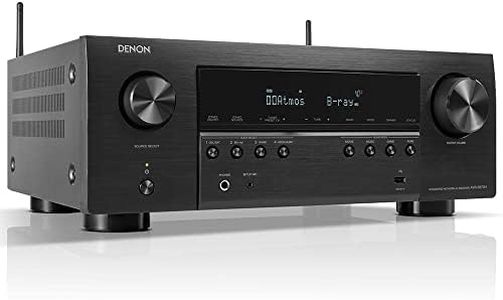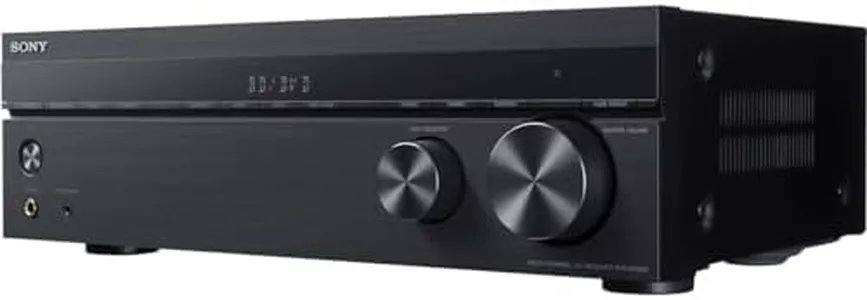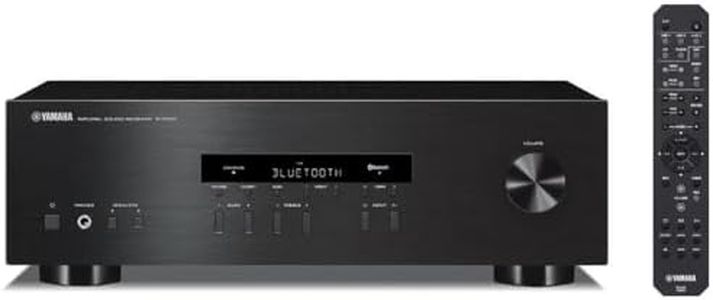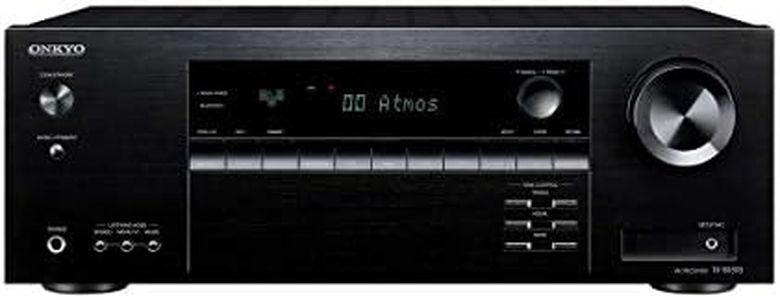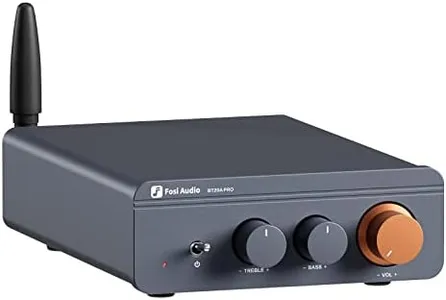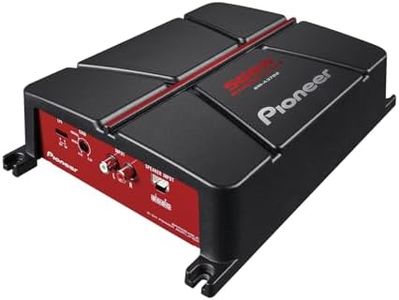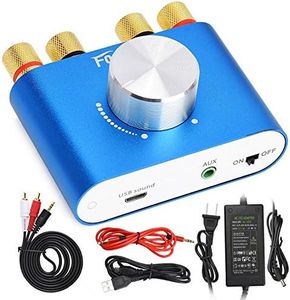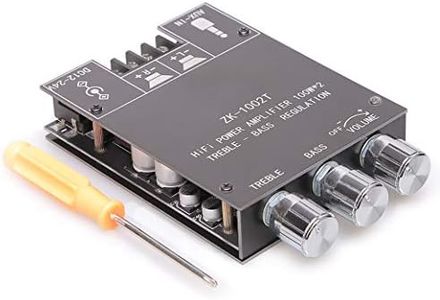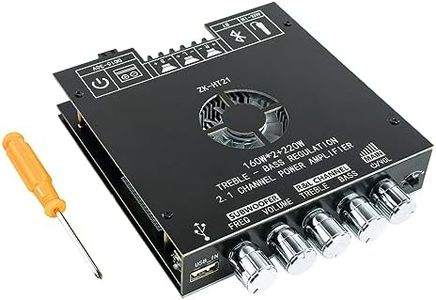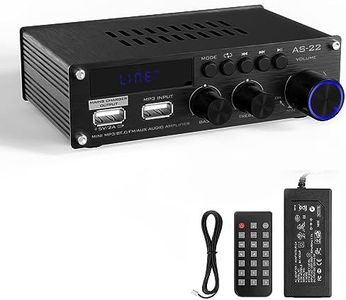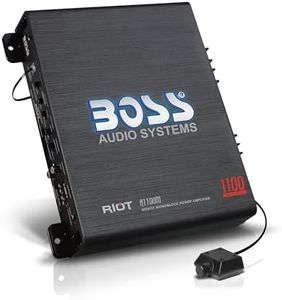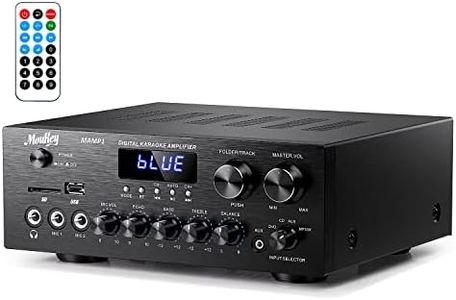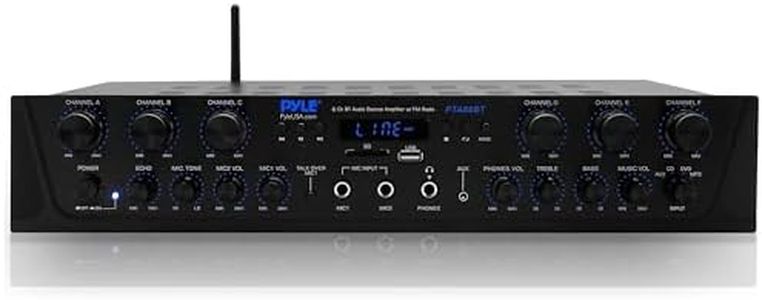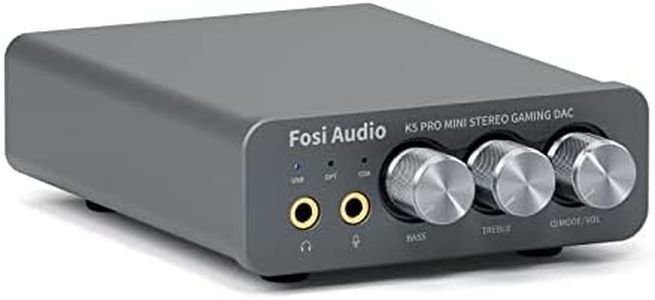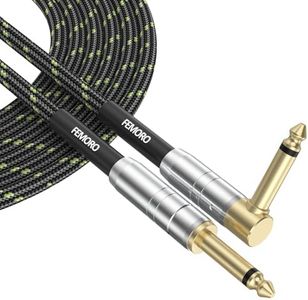We Use CookiesWe use cookies to enhance the security, performance,
functionality and for analytical and promotional activities. By continuing to browse this site you
are agreeing to our privacy policy
10 Best Budget Amplifiers 2025 in the United States
How do we rank products for you?
Our technology thoroughly searches through the online shopping world, reviewing hundreds of sites. We then process and analyze this information, updating in real-time to bring you the latest top-rated products. This way, you always get the best and most current options available.

Buying Guide for the Best Budget Amplifiers
Choosing the right budget amplifier can significantly enhance your audio experience without breaking the bank. The key is to understand the specifications that matter most to your needs and how they impact performance. By focusing on these key specs, you can make an informed decision that aligns with your listening preferences and setup requirements.Power OutputPower output, measured in watts per channel (WPC), indicates how much power the amplifier can deliver to your speakers. This is important because it affects the volume and clarity of the sound. For small rooms or casual listening, an amplifier with 20-50 WPC may suffice. For larger rooms or more demanding listening, look for 50-100 WPC or more. Consider your room size and how loud you like your music when choosing the power output.
Impedance CompatibilityImpedance, measured in ohms, refers to the resistance the amplifier will face from the speakers. Most amplifiers are designed to work with speakers that have an impedance of 4, 6, or 8 ohms. It's important to match the amplifier's impedance rating with your speakers to ensure optimal performance and avoid damage. Check your speaker specifications and choose an amplifier that supports the same impedance.
Total Harmonic Distortion (THD)Total Harmonic Distortion (THD) measures the amount of distortion the amplifier introduces to the audio signal, expressed as a percentage. Lower THD values indicate cleaner sound. For most listeners, a THD of 0.1% or lower is ideal, as it ensures high fidelity audio. If you are an audiophile or very particular about sound quality, aim for amplifiers with even lower THD.
Signal-to-Noise Ratio (SNR)The Signal-to-Noise Ratio (SNR) measures the level of the desired signal compared to the level of background noise, expressed in decibels (dB). A higher SNR means clearer sound with less background noise. Look for amplifiers with an SNR of 80 dB or higher for good audio quality. If you are sensitive to noise or use high-quality speakers, aim for an SNR of 100 dB or more.
Connectivity OptionsConnectivity options determine how you can connect your amplifier to other devices. Common inputs include RCA, optical, and Bluetooth. Consider what devices you plan to connect, such as a turntable, TV, or smartphone. If you have multiple sources, look for an amplifier with a variety of inputs. Bluetooth connectivity is useful for wireless streaming from mobile devices.
Size and DesignThe size and design of the amplifier can affect where you place it and how it fits with your existing setup. Compact amplifiers are great for small spaces or minimalist setups, while larger units may offer more features and better heat dissipation. Consider the space you have available and whether the amplifier's design complements your other audio equipment.
Most Popular Categories Right Now
